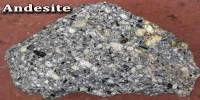Working on isolated islands in the Galápagos Archipelago, an international team of volcanologists discovered that volcanoes that consistently produce small basaltic lava eruptions conceal a variety of chemically diverse magmas in their underground plumbing systems, some of which have the potential to produce explosive activity.
Over millions of years, numerous volcanoes create eruptions of a similar nature. For instance, lava flows made of molten basaltic rock frequently erupt from volcanoes in Iceland, Hawaii, and the Galápagos Islands, creating lengthy rivers of fire that flow down their flanks.
Although these lava flows could cause damage to nearby homes, they typically move slowly and do not represent a threat to human life comparable to more explosive eruptions like those at Vesuvius or Mt. St. Helens. Local authorities use this long-term regularity in a volcano’s eruptive activity to guide their planning for hazards.
Scientists from the US, UK, and Ecuador made up the research team, which was led by Dr. Michael Stock of Trinity College Dublin and focused on two Galápagos volcanoes that have only ever spewed compositionally consistent basaltic lava flows at the Earth’s surface.
The team was able to reconstitute the chemical and physical properties of magmas stored underground under the volcanoes by analyzing the compositions of minute crystals in the lavas.
The study’s findings demonstrate that the magmas beneath volcanoes are incredibly diverse and can have compositions akin to those erupted at Mt. St. Helens, in contrast to the monotonous basaltic lavas that are produced above the Earth’s surface.
When there is enough magma flowing through the earth beneath the structure to “overprint” any chemical diversity, the team argues that volcanoes regularly produce basaltic lavas that are composed uniformly. When volcanoes are close to a “hot spot,” which is a plume of hot magma flowing upward from deep below the Earth, this can happen.
Although there’s no sign that these Galápagos volcanoes will undergo a transition in eruption style any time soon, our results show why other volcanoes might have changed their eruptive behavior in the past. The study will also help us to better understand the risks posed by volcanoes in other parts of the world just because they’ve always erupted a particular way in the past doesn’t mean you can rely on them to continue doing the same thing indefinitely into the future.
Dr. Michael Stock
The study did find that under some conditions the chemically varied magmas might become mobile and rise to the surface.
In this situation, lava eruptions from volcanoes that have consistently produced basaltic lava for millennia may suddenly transition to more explosive activity.
Dr. Stock, from Trinity’s School of Natural Sciences, and lead author on the paper, said:
“This was really unexpected. We started the study wanting to know why these volcanoes were so boring and what process caused the erupted lava compositions to remain constant over long timescales. Instead we found that they aren’t boring at all they just hide these secret magmas under the ground.”
“Although there’s no sign that these Galápagos volcanoes will undergo a transition in eruption style any time soon, our results show why other volcanoes might have changed their eruptive behavior in the past. The study will also help us to better understand the risks posed by volcanoes in other parts of the world just because they’ve always erupted a particular way in the past doesn’t mean you can rely on them to continue doing the same thing indefinitely into the future.”
Dr. Benjamin Bernard, a volcanologist involved in monitoring Galápagos volcanoes at Instituto Geofísico and co-author on the paper, added:
“This discovery is a game-changer because it allows us to reconcile apparently divergent observations, such as the presence of explosive deposits at several Galápagos volcanoes. It also allows us to better understand the behaviour of these volcanoes, which is essential for volcano monitoring and hazard assessment.”
















